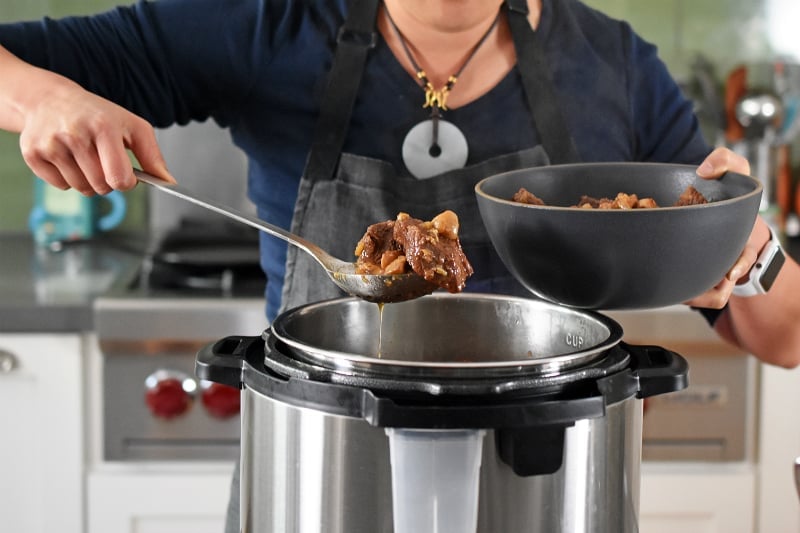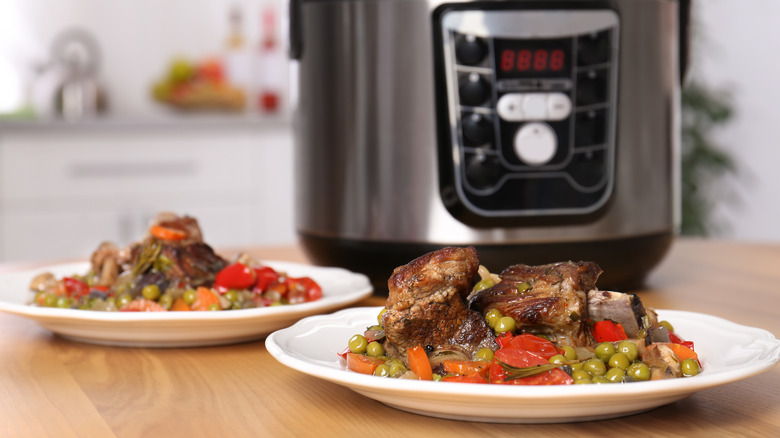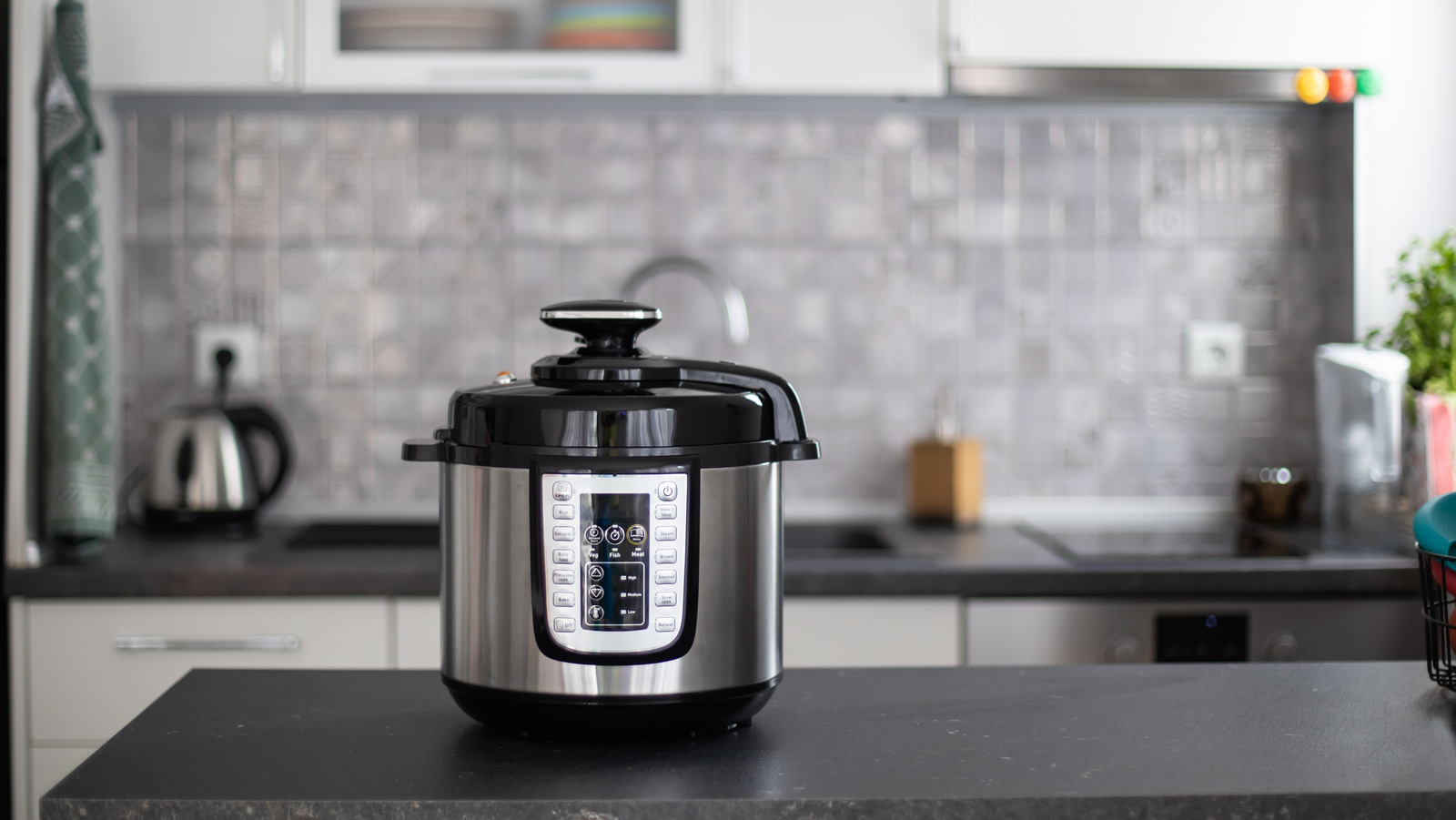Mastering the Art: How to Cook Brown Rice in a Pressure Cooker
Written By James Morgan
Cooking rice can be a daunting task for some, especially when it comes to achieving that perfect texture and flavor. If you've ever wondered how to cook brown rice in a pressure cooker effortlessly, you're in the right place! This comprehensive guide will walk you through every step, ensuring you get perfect results every time. Our main keyword, 'how to cook brown rice in a pressure cooker', is used throughout this article to provide you with the best insights and techniques. Plus, we'll share tips, tricks, and even some nutritional information to make your experience worthwhile.

Why Choose Brown Rice?
Brown rice is a whole grain, meaning it retains the bran and germ portions of the grain, making it more nutritious compared to its white counterpart. It's packed with fiber, vitamins, and minerals, making it a health-conscious choice for those looking to maintain a balanced diet. The slightly chewy texture and nutty flavor also make it versatile for a variety of dishes, from stir-fries to salads.
Nutritional Benefits
One of the primary reasons people switch to brown rice is for its numerous health benefits. It is rich in dietary fiber, which aids in digestion and promotes a feeling of fullness, making it easier to manage weight. Brown rice is also a good source of magnesium, which is essential for bone health and energy production. Furthermore, it contains antioxidants that help in fighting off free radicals, thus reducing the risk of chronic diseases.

Getting Started: What You Need
Before you get started with cooking brown rice in a pressure cooker, it's important to have all the necessary equipment and ingredients on hand. Heres a quick checklist:
- 1 cup of brown rice
- 2 cups of water or broth
- A pinch of salt (optional)

Step-by-Step Guide: How to Cook Brown Rice in a Pressure Cooker
For those new to using a pressure cooker, the process of cooking brown rice can seem intimidating. However, with this comprehensive guide, you'll find it to be a lot simpler than you might expect. Lets dive into the steps:
Step 1: Measure Your Ingredients
Accurate measurement is crucial when cooking rice. Start by measuring one cup of brown rice and two cups of water or broth. If you prefer a more flavorful rice, using broth instead of water can make a significant difference. A pinch of salt can also be added at this stage if desired.
Step 2: Rinse the Rice
Rinsing the rice helps to remove any debris or excess starch that can make the rice gummy. Place the brown rice in a fine-mesh strainer and rinse it under cold running water for a few minutes. Allow it to drain well before adding it to the pressure cooker.
Step 3: Add Ingredients to the Pressure Cooker
Transfer the rinsed brown rice to the pressure cooker. Add the water or broth and a pinch of salt if you're using it. Ensure that the rice is evenly distributed in the cooker for uniform cooking.
Step 4: Set the Pressure Cooker
Secure the lid on the pressure cooker and set it to the pressure-cooking mode. For brown rice, you'll want to set it to high pressure for 22-24 minutes. The exact time can vary depending on the brand and model of your pressure cooker, so it's always a good idea to refer to the manufacturer's instructions.
Step 5: Natural Release
After the cooking time has elapsed, allow the pressure to release naturally. This can take about 10-15 minutes. Natural release prevents the rice from becoming mushy and ensures it has the perfect texture.
Step 6: Fluff and Serve
Once the pressure has fully released, open the lid carefully. Use a fork to fluff the rice gently, separating the grains. Your perfectly cooked brown rice is now ready to be served! It pairs wonderfully with a variety of dishes, from curries and stir-fries to salads and wraps.

Additional Tips and Tricks
Cooking brown rice in a pressure cooker can be a game-changer, but there are always a few extra tips and tricks to make the process even smoother and more efficient. Here are some additional insights to consider:
Tip 1: Adjusting Cooking Times
If you find that your brown rice is either too hard or too mushy, you can adjust the cooking time accordingly. A few extra minutes can make a significant difference in achieving the desired texture.
Tip 2: Adding Aromatics
For added flavor, consider adding aromatics such as bay leaves, garlic, or slices of ginger to the pressure cooker. These can infuse the rice with subtle yet delightful flavors.
Tip 3: Using the Keep Warm Function
Most modern pressure cookers come with a keep-warm function, which is perfect for keeping the rice at the ideal serving temperature without overcooking it. This is particularly useful if you're preparing other components of your meal simultaneously.
Substituting Water with Broth or Stock
While water is the standard liquid used for cooking brown rice, substituting it with broth or stock can elevate the flavor profile of your rice. Vegetable, chicken, or beef broth can all be excellent choices. This simple swap can make the rice more savory and suitable for various dishes.
Common Mistakes to Avoid
Even with a foolproof method, there can be some common pitfalls when cooking brown rice in a pressure cooker. Here are a few mistakes to avoid to ensure your rice turns out perfectly every time:
Mistake 1: Not Rinsing the Rice
Skipping the rinsing step can result in gummy rice. Rinsing helps remove excess starch and ensures each grain is separate and fluffy.
Mistake 2: Ignoring Natural Release
Allowing for natural release is crucial for the texture of the rice. A quick release can make the rice mushy or unevenly cooked.
Mistake 3: Incorrect Water-to-Rice Ratio
Maintaining the right water-to-rice ratio is essential. Too much water can make the rice too soft, while too little can leave it undercooked.
Storing and Reheating Brown Rice
Once you've mastered the art of cooking brown rice in a pressure cooker, the next step is to know how to store and reheat it properly. This ensures minimal waste and means you can enjoy your perfectly cooked rice at a later time. Here are some tips for storing and reheating brown rice:
Storing Cooked Brown Rice
Allow the brown rice to cool completely before transferring it to an airtight container. It can be stored in the refrigerator for up to 5-7 days. For longer storage, consider freezing the rice. Portion it into freezer-safe bags or containers, ensuring to remove as much air as possible before sealing.
Reheating Brown Rice
To reheat brown rice, you can use the microwave, stovetop, or even a steamer. If using a microwave, place the rice in a microwave-safe bowl and cover it with a damp paper towel. This adds moisture, preventing the rice from drying out. Heat on high for 1-2 minutes, or until heated through. On the stovetop, add the rice to a saucepan with a splash of water or broth, cover, and heat on low until warm. Stir occasionally to ensure even heating.
FAQs About How to Cook Brown Rice in a Pressure Cooker
Here are some frequently asked questions to clear any doubts or issues you may have about cooking brown rice in a pressure cooker:
Can I Use Quick-Cooking Brown Rice?
While this guide focuses on regular brown rice, quick-cooking brown rice can also be used. However, the cooking time will be significantly reduced. Refer to the package instructions for the best results.
What Is the Ideal Pressure Setting?
Most pressure cookers have a high-pressure setting that is ideal for cooking brown rice. Ensure to follow the manufacturer's guidelines for your specific model.
Can I Cook Other Types of Rice?
Yes, you can! While this article is focused on brown rice, white rice, jasmine rice, and basmati rice can also be cooked using similar methods. However, the cooking times and water-to-rice ratios may vary.
Conclusion
Cooking brown rice in a pressure cooker is a simple and efficient method, offering perfectly cooked rice with minimal fuss. With this guide on 'how to cook brown rice in a pressure cooker', you'll be well-equipped to impress your family and friends with your newfound culinary skills. Not only is this method time-saving, but it also retains the nutritional value and flavor of this wholesome grain.
For those looking to delve deeper into cooking techniques and kitchen essentials, check out the following resources:
As an Amazon Associate, I earn from qualifying purchases.



